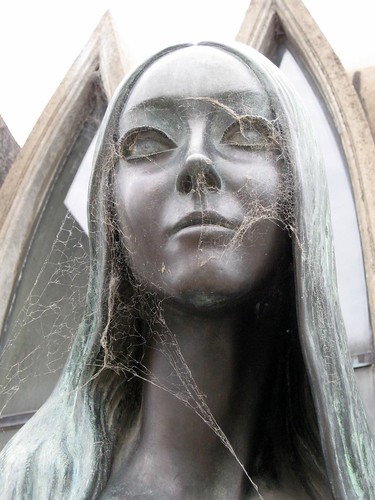Does justice look this monstrous?
 Whatever little bit of respect I had for some of the ‘mainstream’ media, is shrouded in agitation today. Almost every channel from one of the acclaimed ‘world-democracy’ flashed the news of ‘ Kasab sentenced to death – justice served’. It is of great misfortune that common brains are being fed with such contaminated views and disdain prevails in our thoughts and comprehensions. I do not want to get into the legal implications of the trial or the verdict and nor the sentence is of much of sensation as almost everyone knew the outcome of the trial. But the larger question seems to be that would we ever be able to see justice beyond injustices and retribution? While I agree that law enforcement has to fulfill its responsibilities to protect the citizens of a country, at the same time I think the civil society of a ‘democratic nation’ should deconstruct the given rhetoric that is made to believe as absolute legal truth and should shed light on the unseen and untold and at least attempt to free the incarcerated notions of justice.
Whatever little bit of respect I had for some of the ‘mainstream’ media, is shrouded in agitation today. Almost every channel from one of the acclaimed ‘world-democracy’ flashed the news of ‘ Kasab sentenced to death – justice served’. It is of great misfortune that common brains are being fed with such contaminated views and disdain prevails in our thoughts and comprehensions. I do not want to get into the legal implications of the trial or the verdict and nor the sentence is of much of sensation as almost everyone knew the outcome of the trial. But the larger question seems to be that would we ever be able to see justice beyond injustices and retribution? While I agree that law enforcement has to fulfill its responsibilities to protect the citizens of a country, at the same time I think the civil society of a ‘democratic nation’ should deconstruct the given rhetoric that is made to believe as absolute legal truth and should shed light on the unseen and untold and at least attempt to free the incarcerated notions of justice.
Can justice be this monstrous? I do not think so. There are two debates, the former is the carnage instigated by the so called ‘terrorists’ on 26/11 in Mumbai and the latter is the debate on how to find solutions and solidify the concept of justice for the ones who suffered and the ones who will suffer. However, the enraged, disillusioned and infected brains seem to have sacrificed the latter over the politics of the former. I have to admit that I have no relationship with the person in question, but have huge stakes in how the concept of justice is formed and reformed through misdeeds of individual’s predatory acts. However, if we go beyond the individuals, we will be able to explore the bouts of mistrust, agony and contingent injustices that exist in systems and social spaces in which these individuals are socialized, poised and monopolized.
There is no doubt that we live in the times of increased contentions and violence among diverging agendas and politics, but we are tempted to victimize the victim rather than curbing the agenda and politics that create and recreate violence and culminate the end of humanity. I can never reconcile the two, that by sentencing a young victim, we will scare anyone else who would plan to do the same. Ironically, the same argument can be used by the fathers of terror to attract more young voices in avenge. Indeed, some of our experiences in Afghanistan reveal that militants have been able to gin up support from youth when the youth were emotionally provoked after seeing the injustices and violence of the government systems and their allies.
I could not believe to hear Haroon Hamid of the DAWN Media Group replying to an audience question on NDTV show (6th May 2010) with Barkha Dutt that ‘terrorism is created in Afghanistan and Pakistan is a victim of it as well as India’. I wondered what happened to the media ethics of the news channels that he run, if nothing else matters to him including the truth. He didn’t even try to unravel the systematic, political and social space that gave birth to discontent and violence transformed into terrorism through the weapons of the same system in Pakistan and the region rather than indulging into a merely political blame game. While the political agendas of some groups and factions entail creating terror and monopolize on religious and nationalistic sentiments of masses, there is an enabling environment that embraced and accepts the invitation and both the agenda and the enabling environment have a symmetrical relationship with the terror and violence that we see in Afghanistan, India and Pakistan. Let’s also not forget and not trivialize the dynamics of social spaces in which we live and see others live, that foster reprisal and revolt by witnessing chronic poverty, famine and increased gaps between different members of the same society. The fragmentation of social spaces within the feudal society as a creation of the capitalist market paradigm that embodies injustice and tremendous rage among youth that not only created Kasab but hundreds of Kasabs in the making. However, for sure any struggles to absolve the process would be trying to rupture the status quo, something that the gatekeepers of the feudal society and their political agenda’s will not allow or approve of and we will be getting used to death sentence of one after another and would have accepted that justice is rendered. Unfortunately, the emerging trajectories do suggest that in quest of conformity with the popular imagination of our ‘independent’ media, we will not be able to recognize the just face of justice anymore but will seek satisfaction in more resentment, discontent and retribution.
Read more
